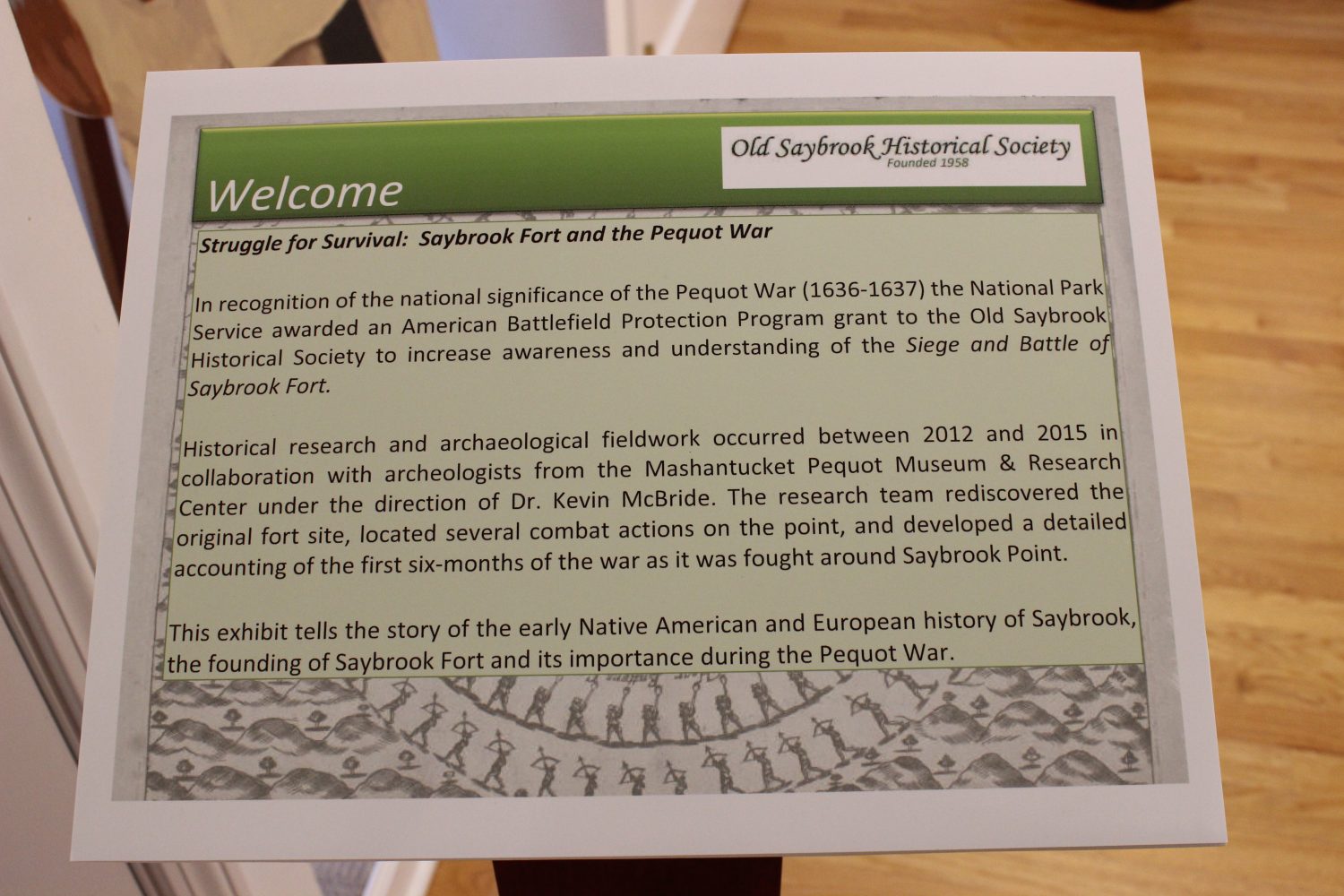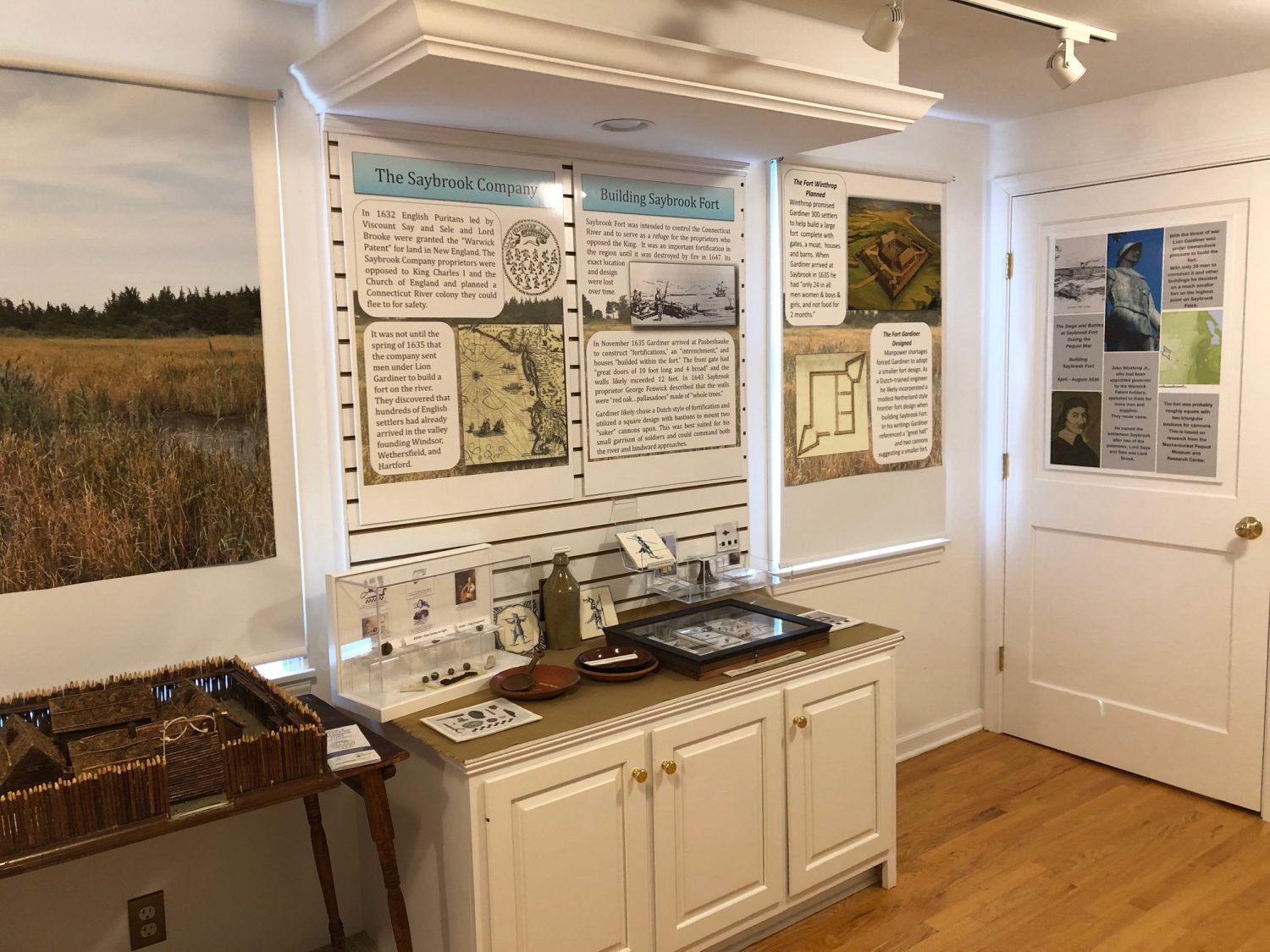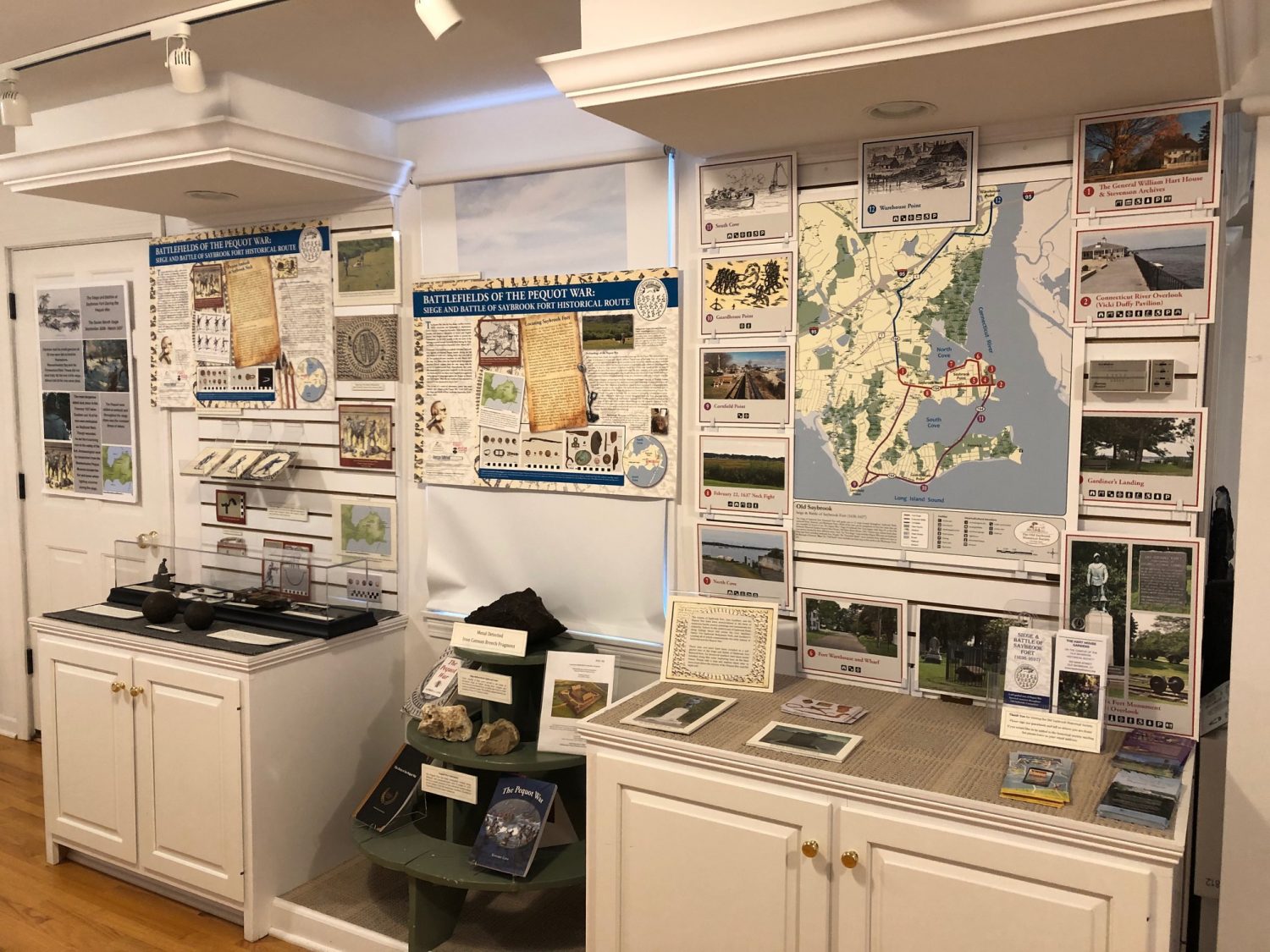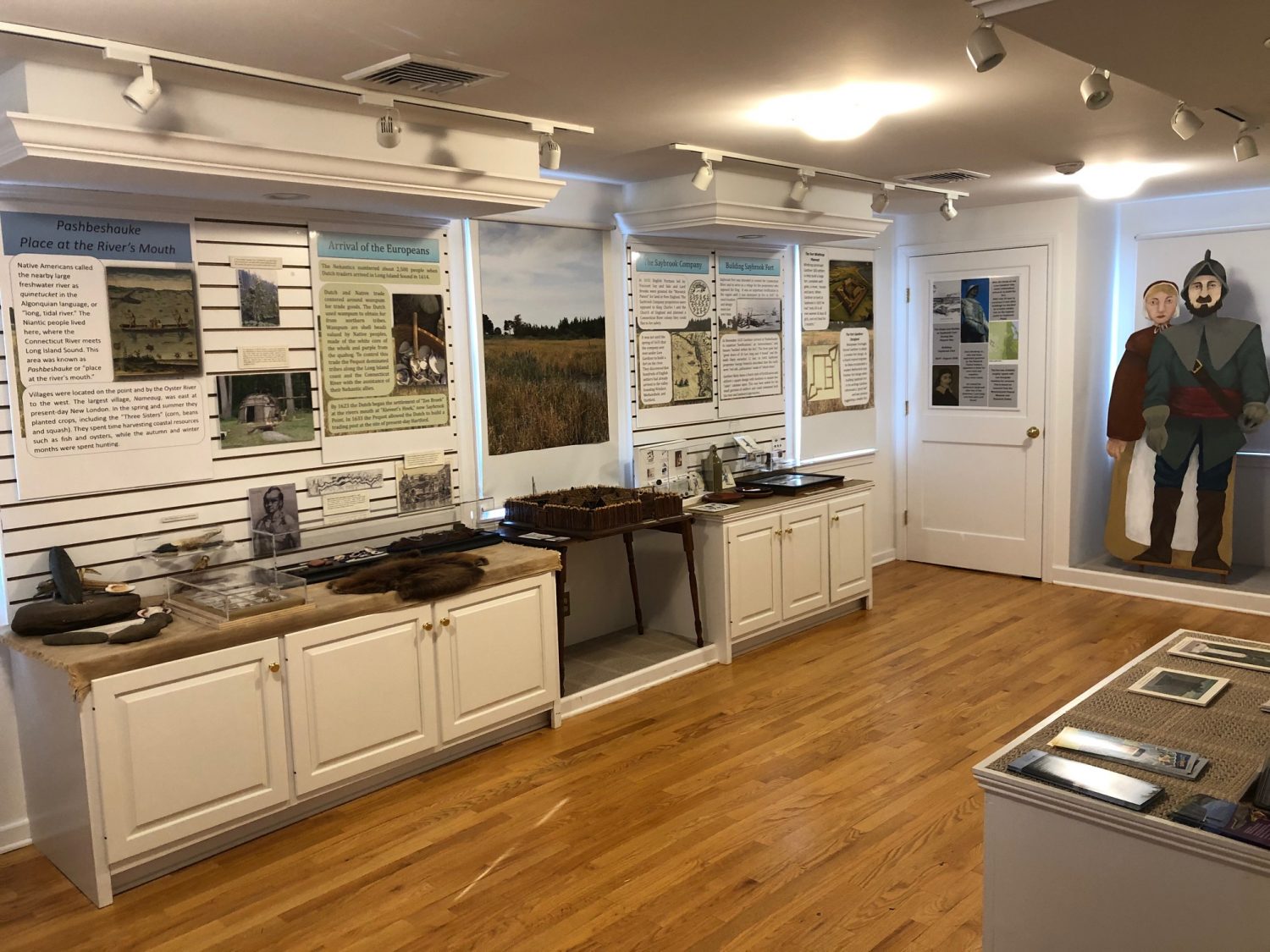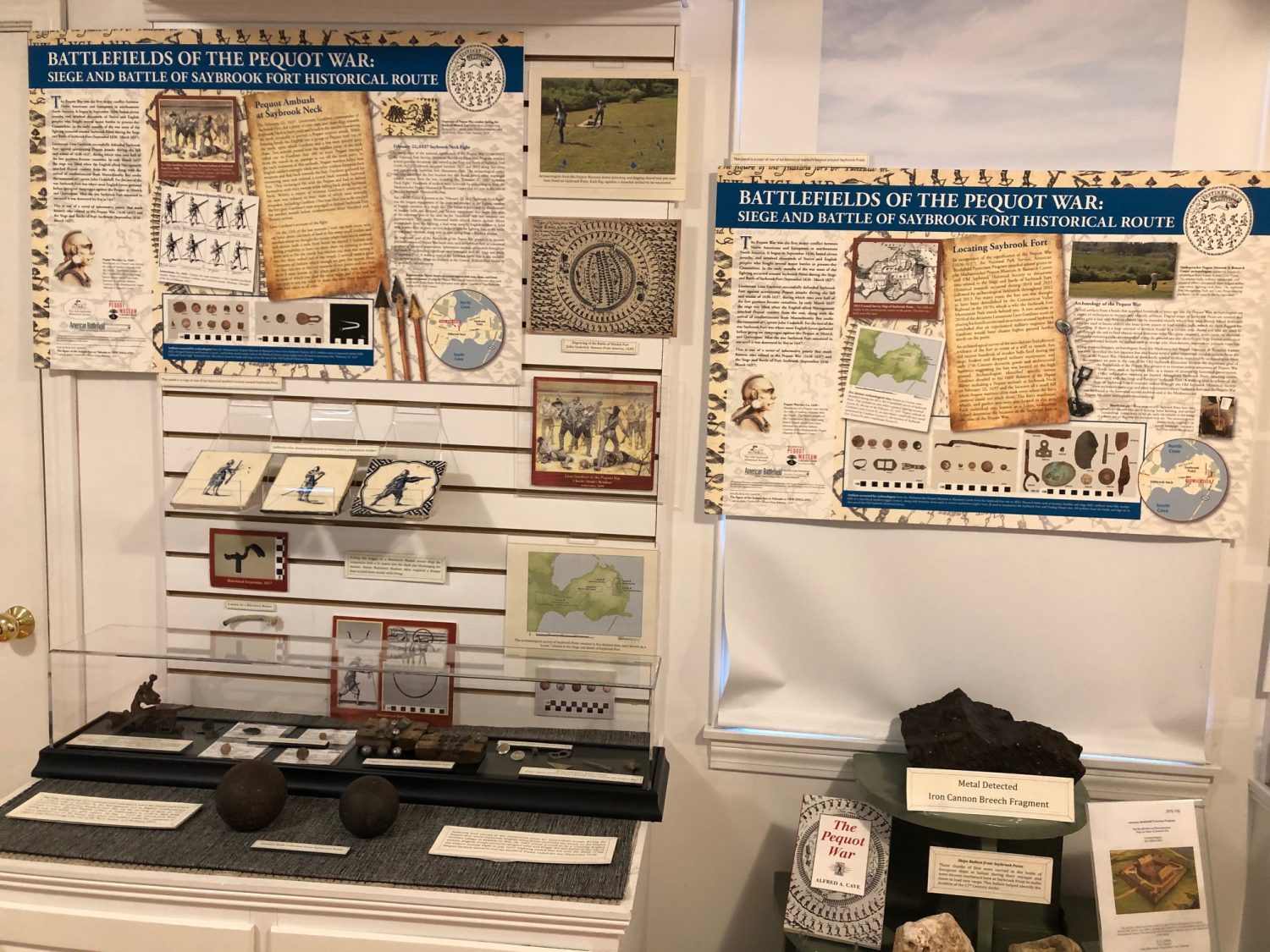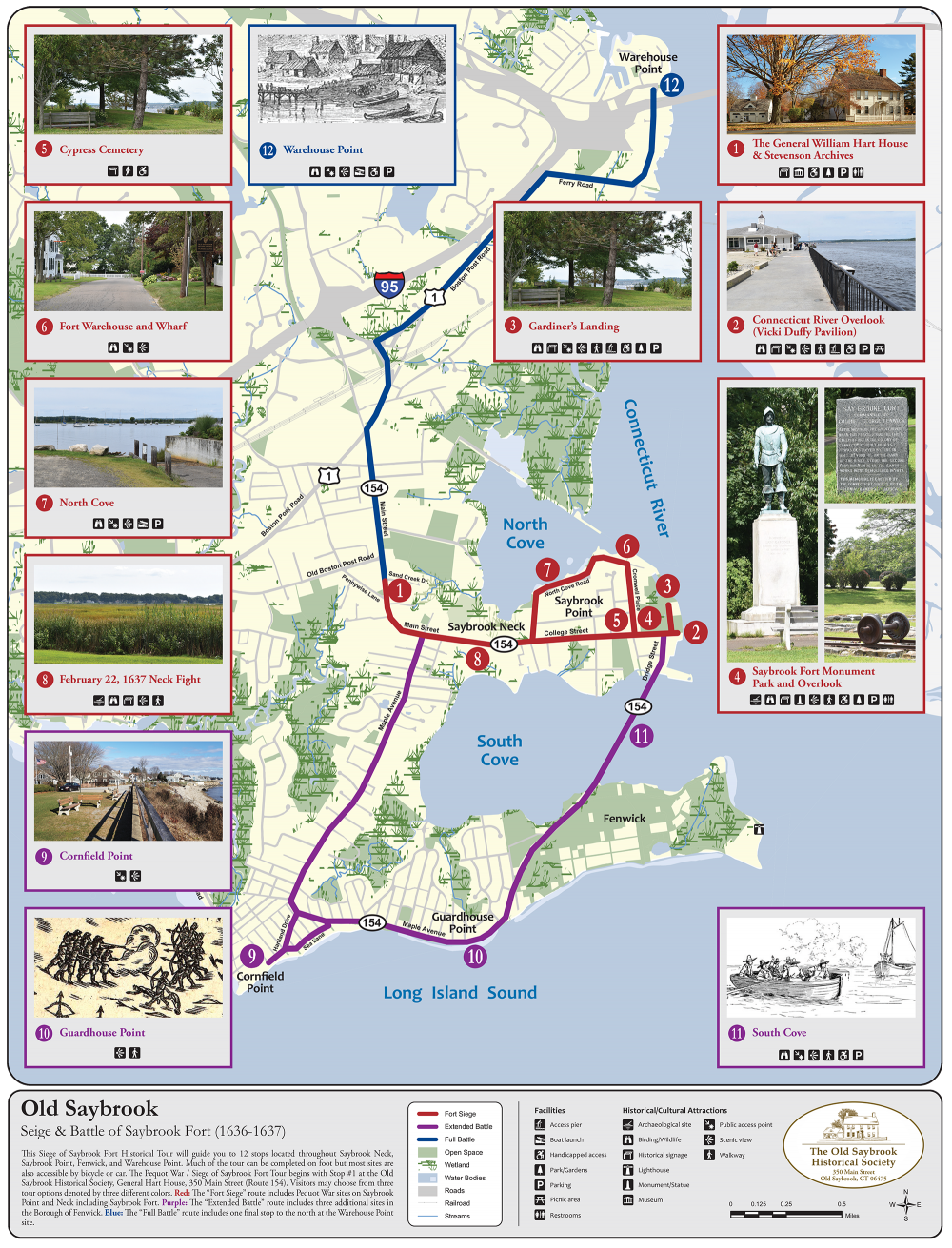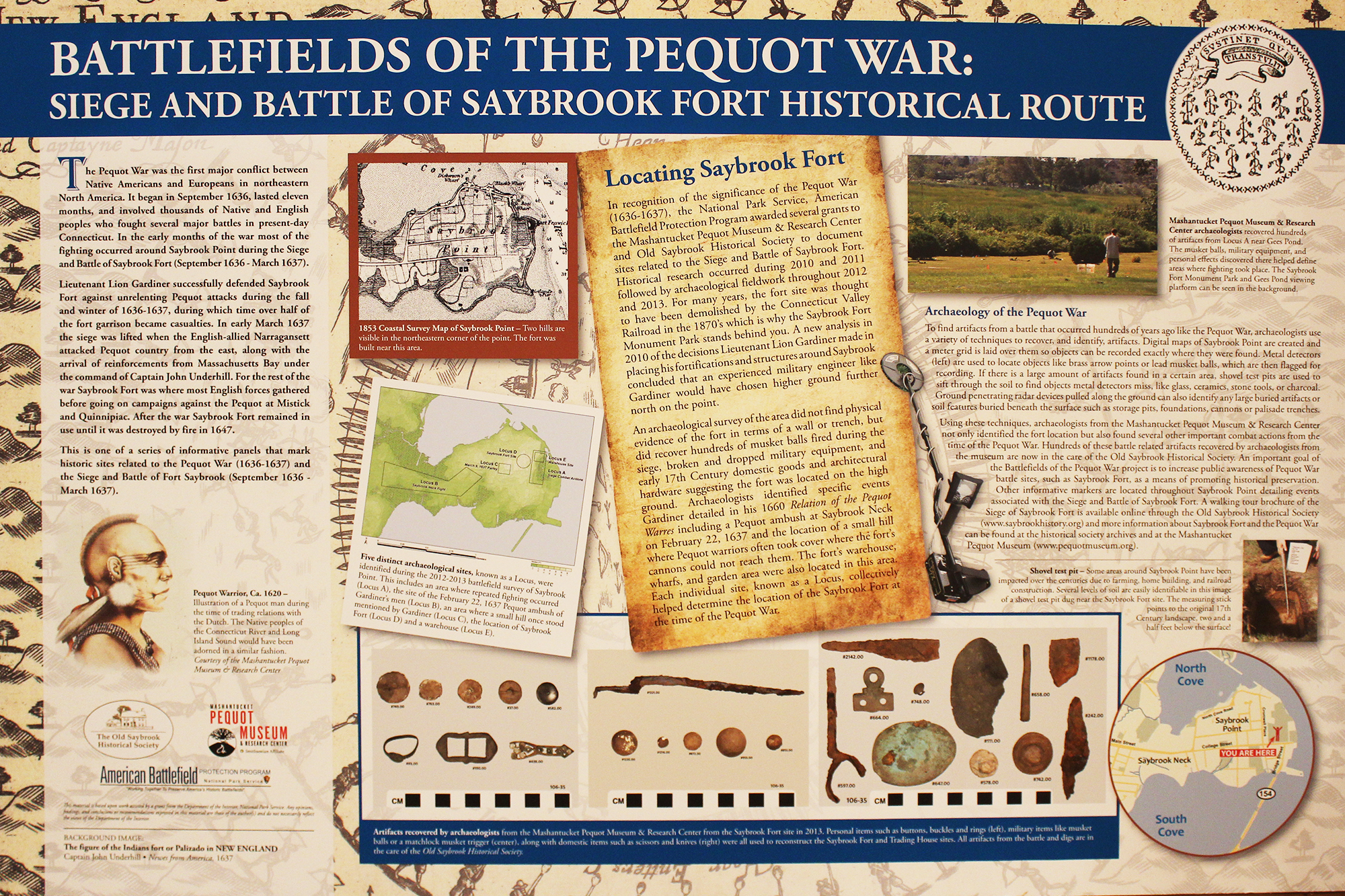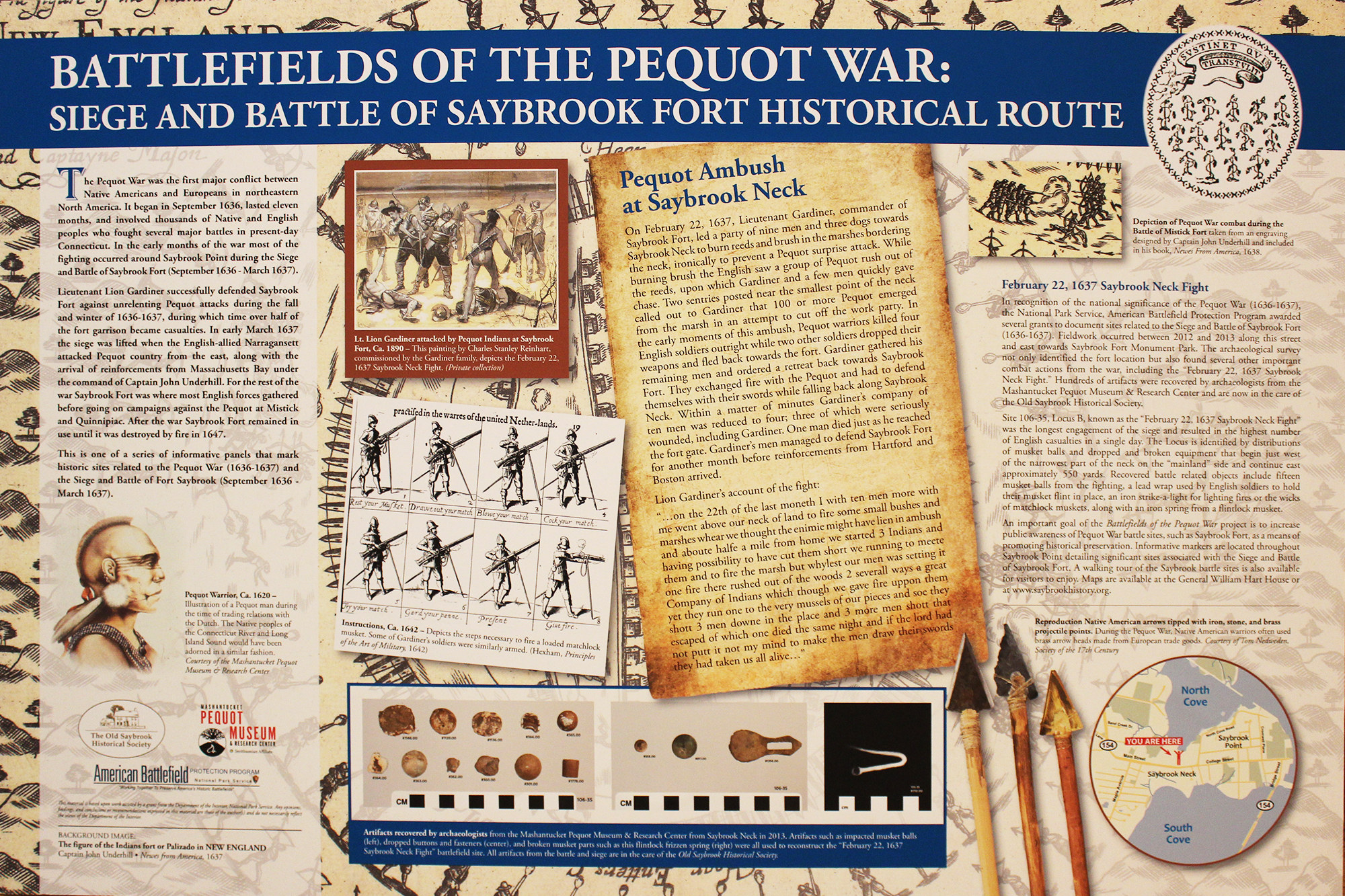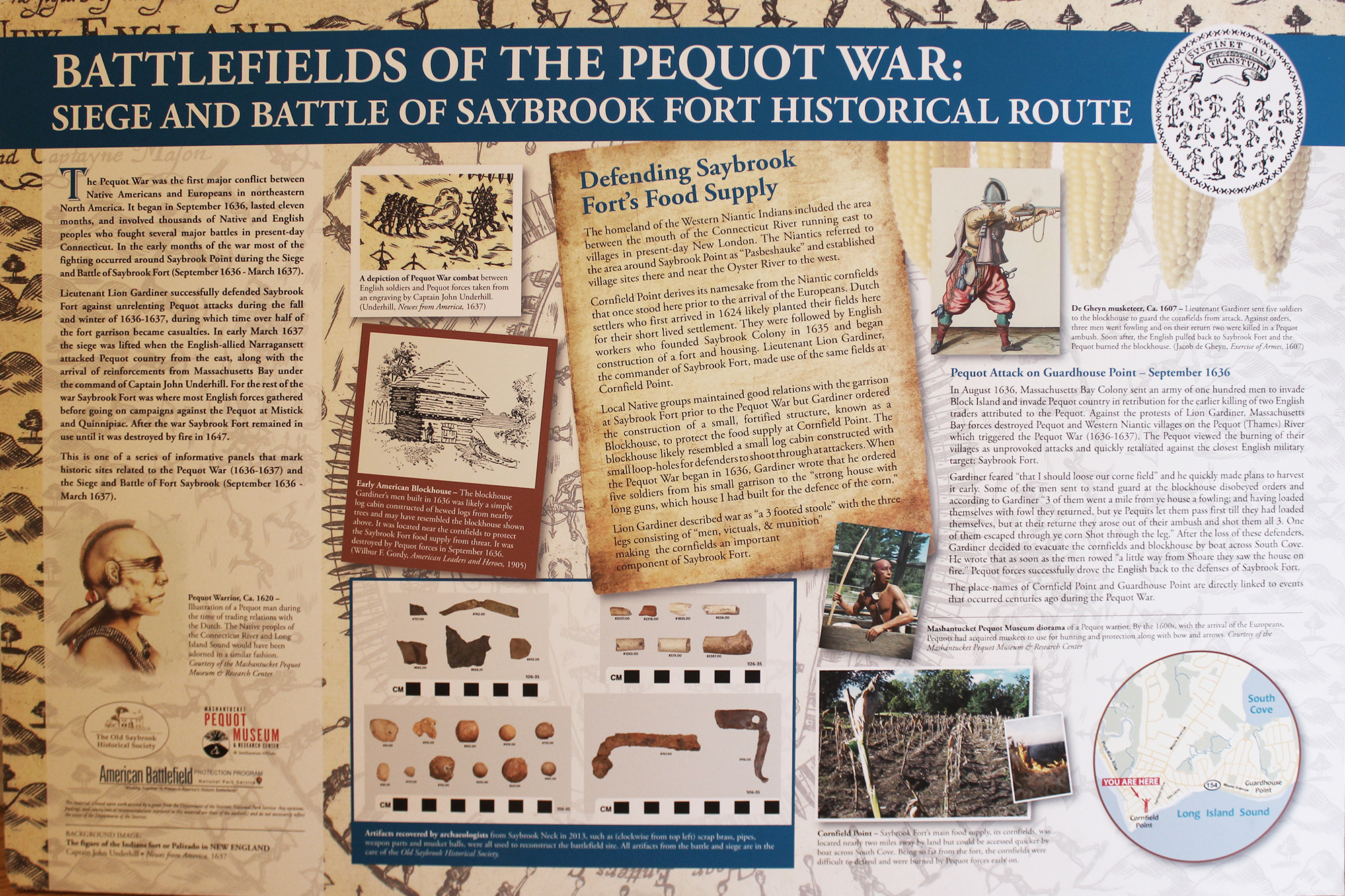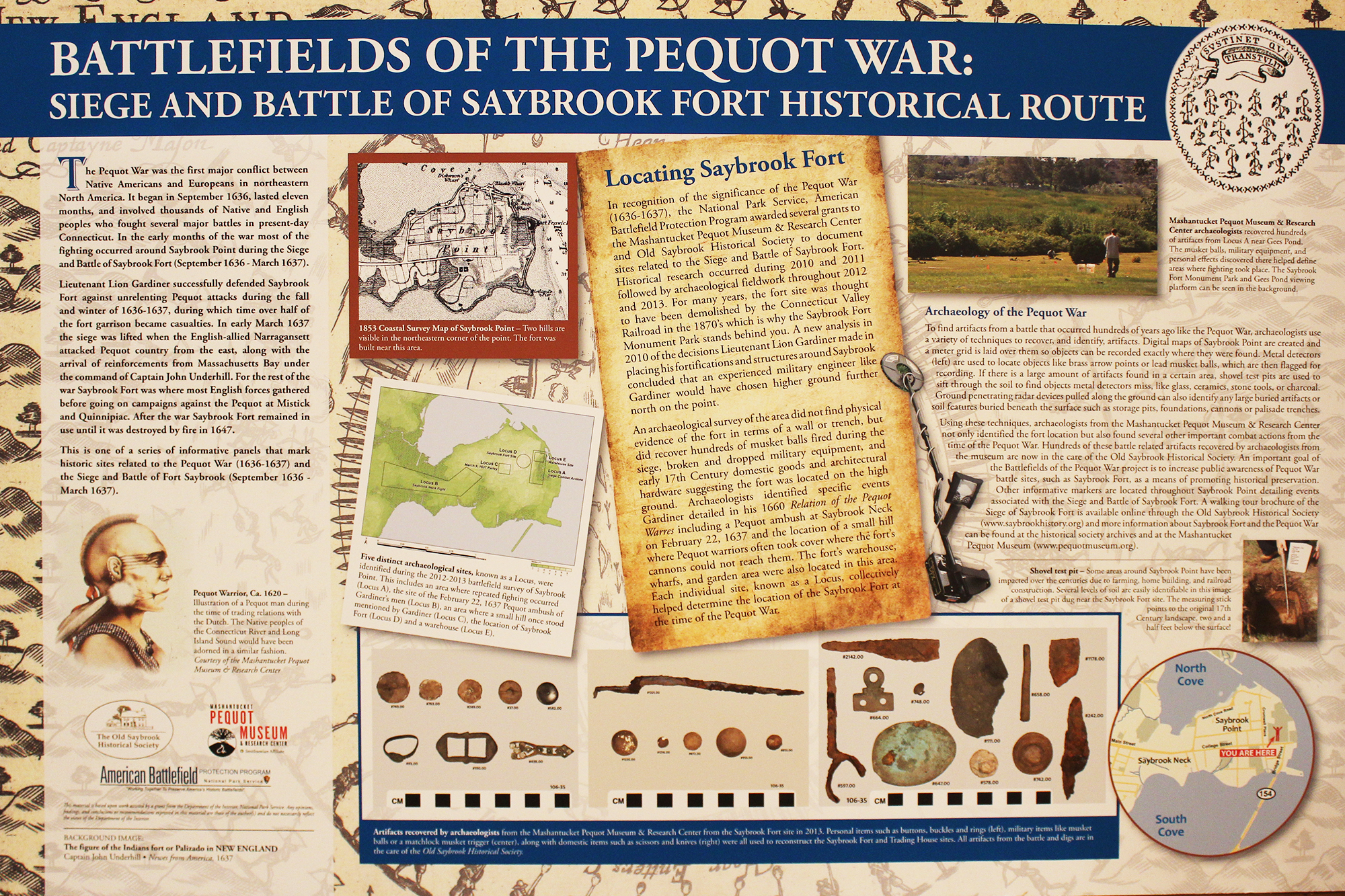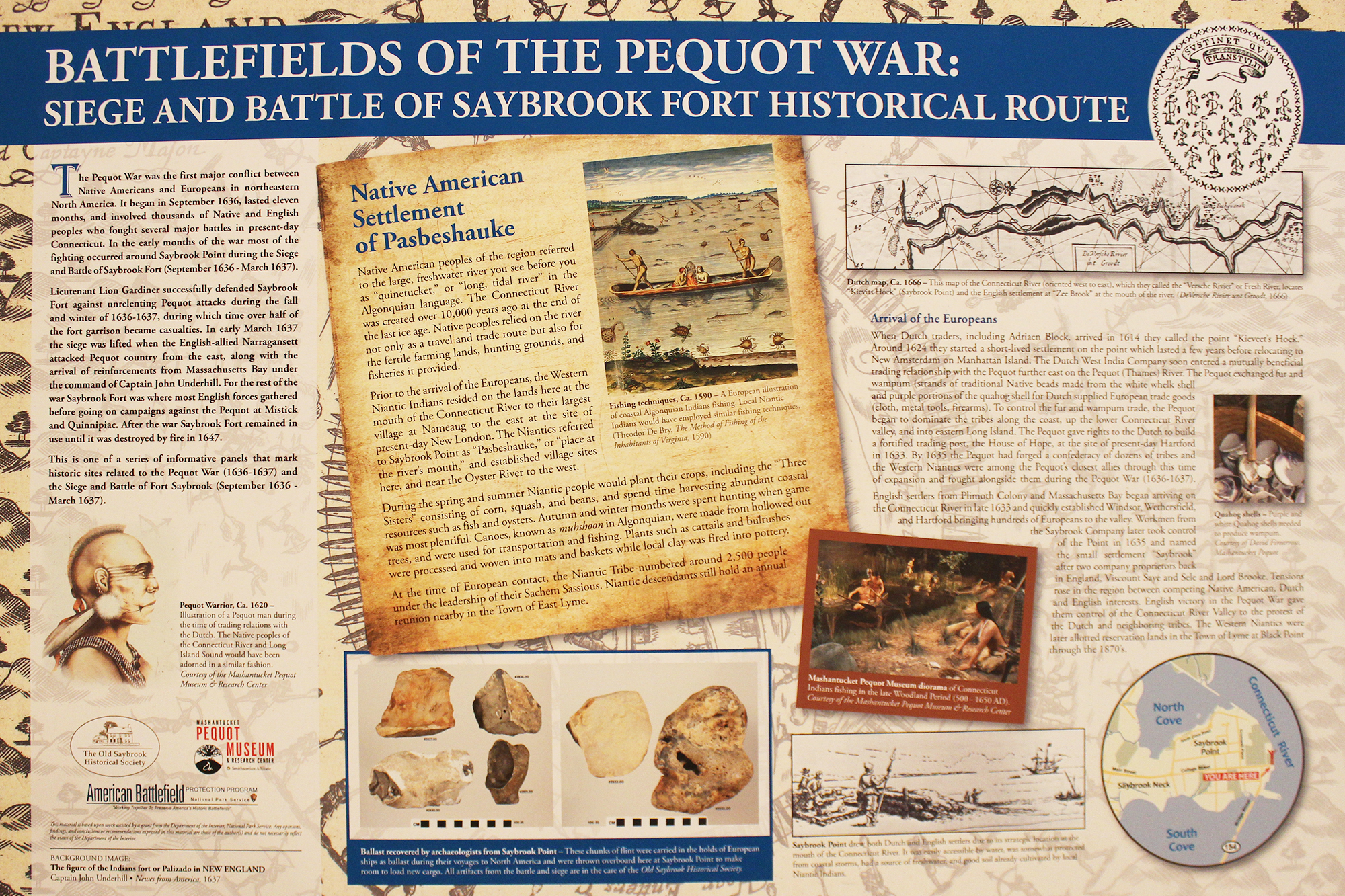The Struggle for Survival: Siege and Battles of Saybrook Fort and the Pequot War
In the summer of 1635 Lion Gardiner, an engineer with experience in constructing forts, signed a contract with English noblemen to build a fort and layout a town in the new world for “gentlemen of quality.”
Gardiner and his wife Mary along with twelve men, two women and supplies arrived at Pashbeshauke at the mouth of the Connecticut River in 1636 and quickly began constructing a fort, planting corn, and eventually building a grist mill.
Saybrook Fort was a military outpost that became the site of the most prolonged fighting of the Pequot War. There were more than 20 Pequot attacks and more than 30 English settlers and soldiers and an unknown number of Natives were killed.
This first fort, built between 1636-1637 on the highest point on Saybrook Point, was destroyed by fire during the winter of 1647-1648. Its precise construction and layout have never been determined. Until now, much of what we knew about the first fort was based on the writings of Lion Gardiner or first governor John Winthrop, Jr.
However, archaeologists are now confident that they have identified the fort’s location in the east-central area of Saybrook Point and, in addition, several battle sites have been identified
The Old Saybrook Historical Society is grateful for funding from:
- The American Battlefield Protection Program
- National Park Service
- Exhibit by the CT Humanities
- The Historic District Commission for the interpretive signs
- The Planning Commission for publishing the 5000 brochures
- The Saybrook Point Inn for the publication on the siege and battles.



